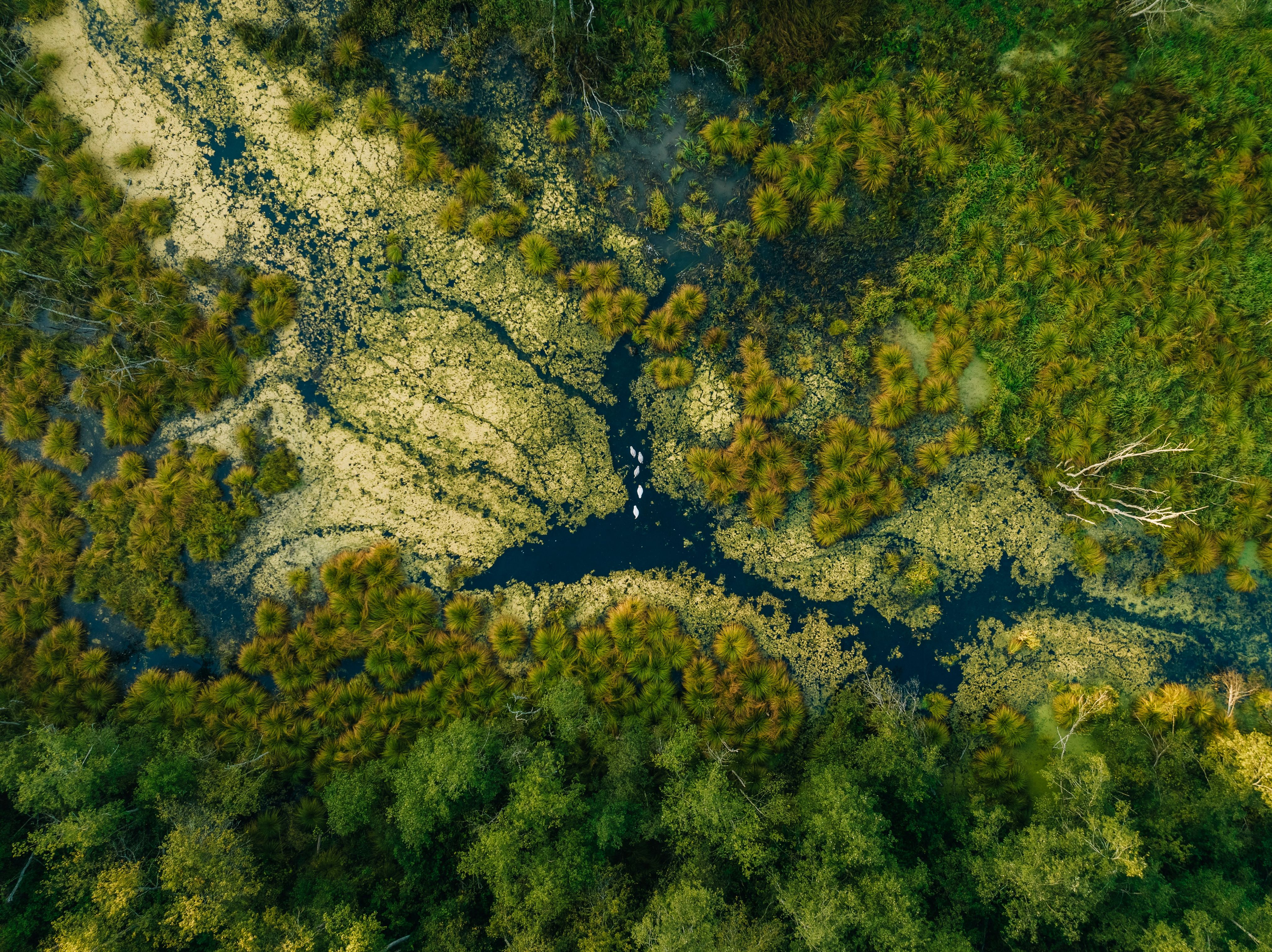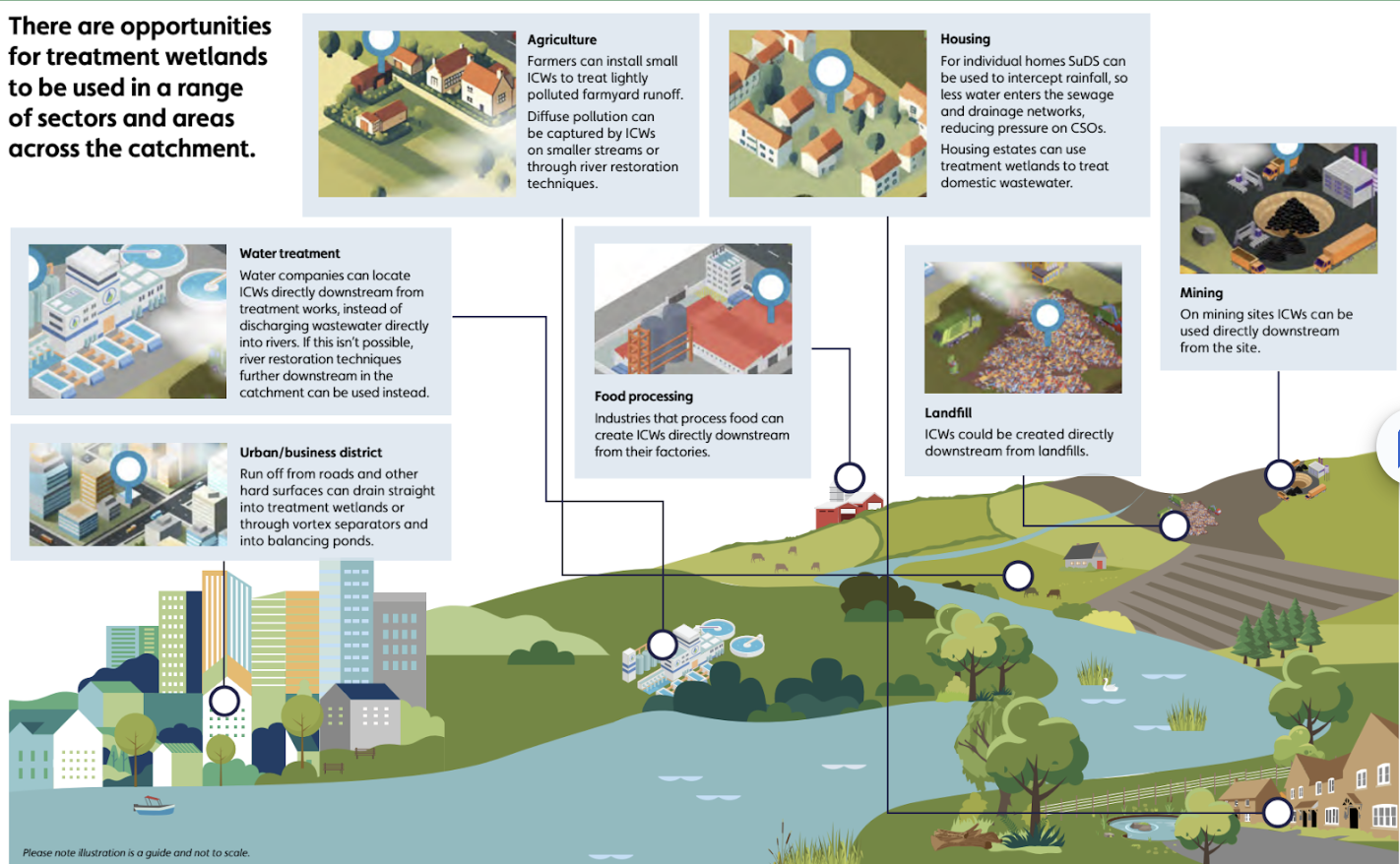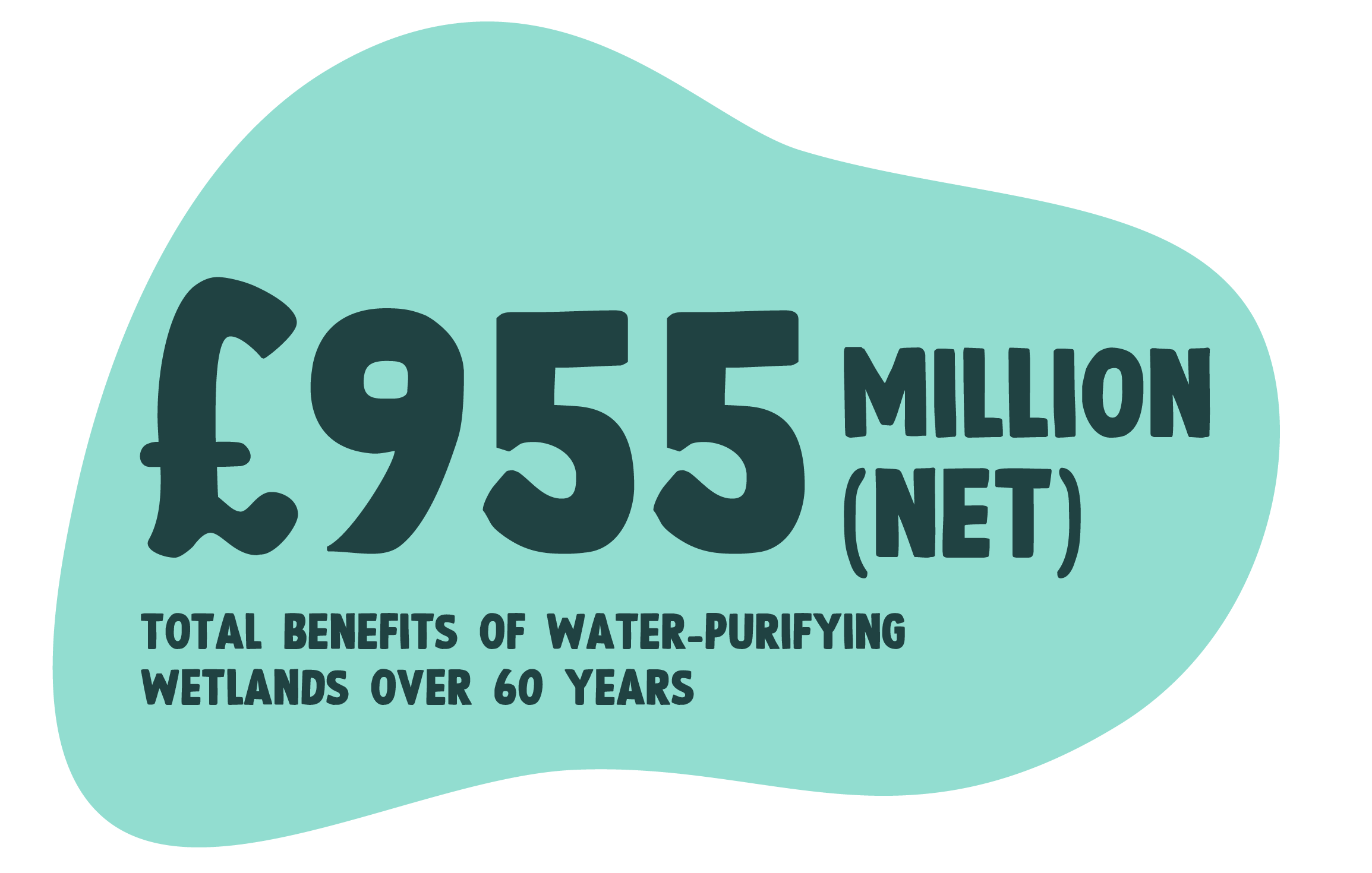Wetlands’ water-purifying potential

England's rivers are sick
Just 14% of the country’s rivers are in good ecological health. All fail chemical standards. This means every river in England is now polluted beyond legal limits. Meanwhile, the wider UK is consistently ranked as one of the worst countries in Europe for water quality. Outrage is rightly spreading but there are ways to clean up our act.
The costs go beyond impacts on health and nature. Our rivers’ poor health is incredibly expensive. The Environment Agency estimates that it will cost around £17.5 billion between 2015 and 2052 to bring England’s waters to ‘good’ status. Contamination of drinking water by pesticides alone has been estimated to cost the UK £120 million a year. Meanwhile, Surfers Against Sewage estimates that around £21.7 million is lost to the UK economy every year due to sick days caused by polluted water.
There are a range of ways to tackle the UK’s polluted waters – wetlands should be a key part of this. Treatment wetlands are a cost-effective part of the solution to tackling this critical problem, while restoring degraded wetlands improves water quality in our natural habitats.
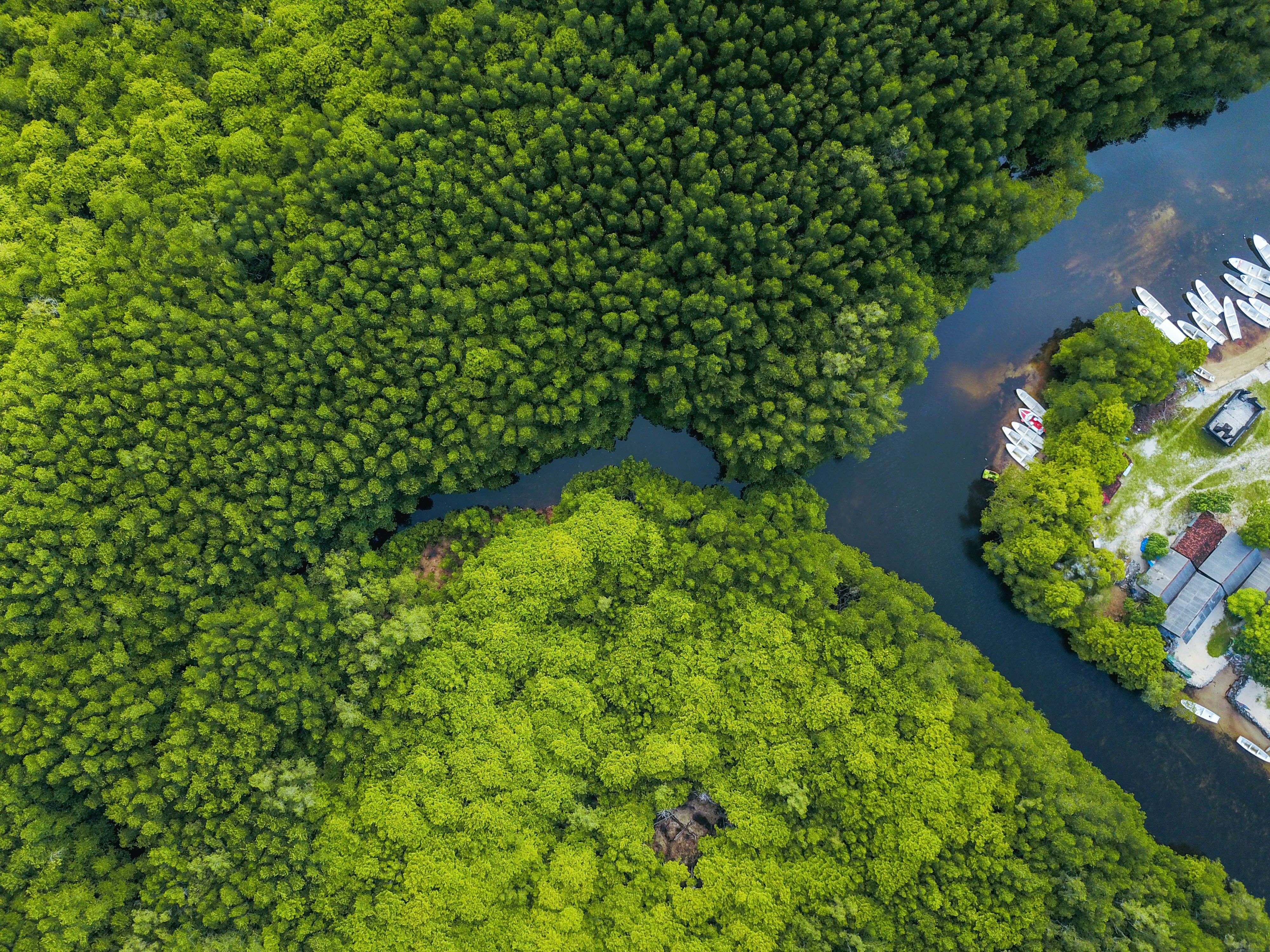
The key causes of the UK’s poor water quality are:
- Agriculture
- Sewage and storm overflows
- Pressure from housing developments
- Roads
- Mines
- Landfills
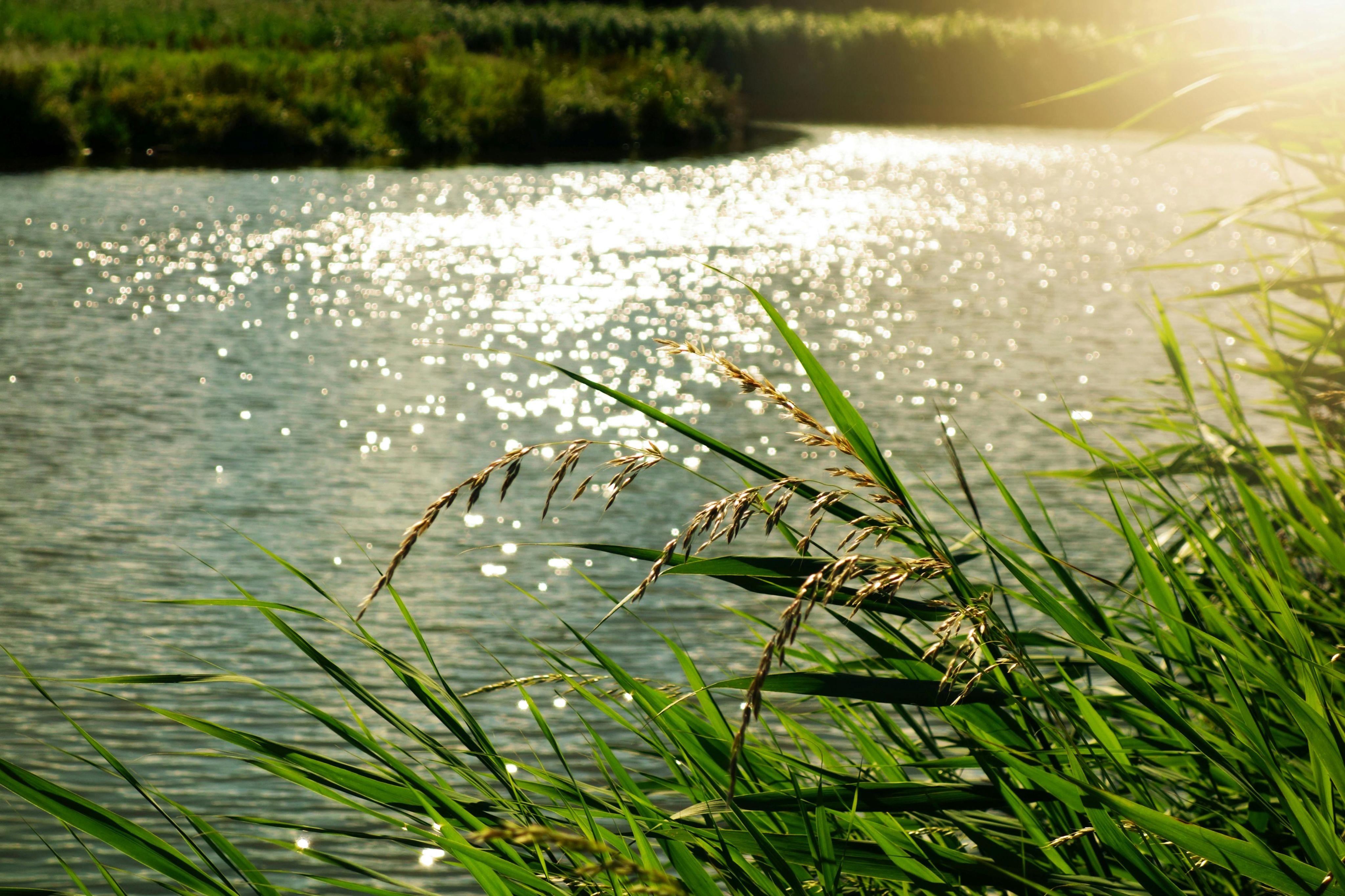
Factoring wetlands into water quality policy
As well as the health impact on people, the build-up of nutrients from fertilisers and sewage leads to the loss of wetland nature, with the damage extending to coastal and marine ecosystems. It also creates ideal conditions for some invasive non-native plants and animals, enabling them to out-compete native and specialised species. This reduces overall biodiversity and costs the UK over £1.7billion a year.
Under the Environment Act, the UK Government has set targets to improve water quality. By 2038 it has committed to:
- Reduce phosphorus loadings from treated wastewater by 80%
- Reduce nitrogen, phosphorus and sediment pollution from agriculture into the water environment by at least 40%
- Halve the length of rivers polluted by harmful metals from abandoned mines.
At present, the UK is not on track to meet these targets. That’s why we are calling for urgent action to unlock the potential of treatment wetlands to help tackle our water quality crisis.

Investing in water quality infrastructure
A proportion of our water company bills are set aside to fund service improvements, but at the end of 2022, only 68% of this budget had been spent. Using our wetland potential resources, water companies can build stronger cases for investment, meeting water quality standards and public expectations.
Tackling pollutants with wetlands
Treatment wetlands are specifically designed to help clean polluted water. They optimise the biological, chemical and physical treatment processes that occur in natural wetland habitats, to transform and remove pollutants.
Treatment wetlands have the potential to remove up to 60% of metal loads, trap and retain up to 90% of sediment run-off and eliminate up to 90% of nitrogen. Unlike concrete water treatment systems, wetlands purify water in a cost-effective and energy-efficient way that provides numerous benefits for both people and wildlife.
Creating more treatment wetlands can, and should, be a central part of the Government’s strategy to meet water quality targets.
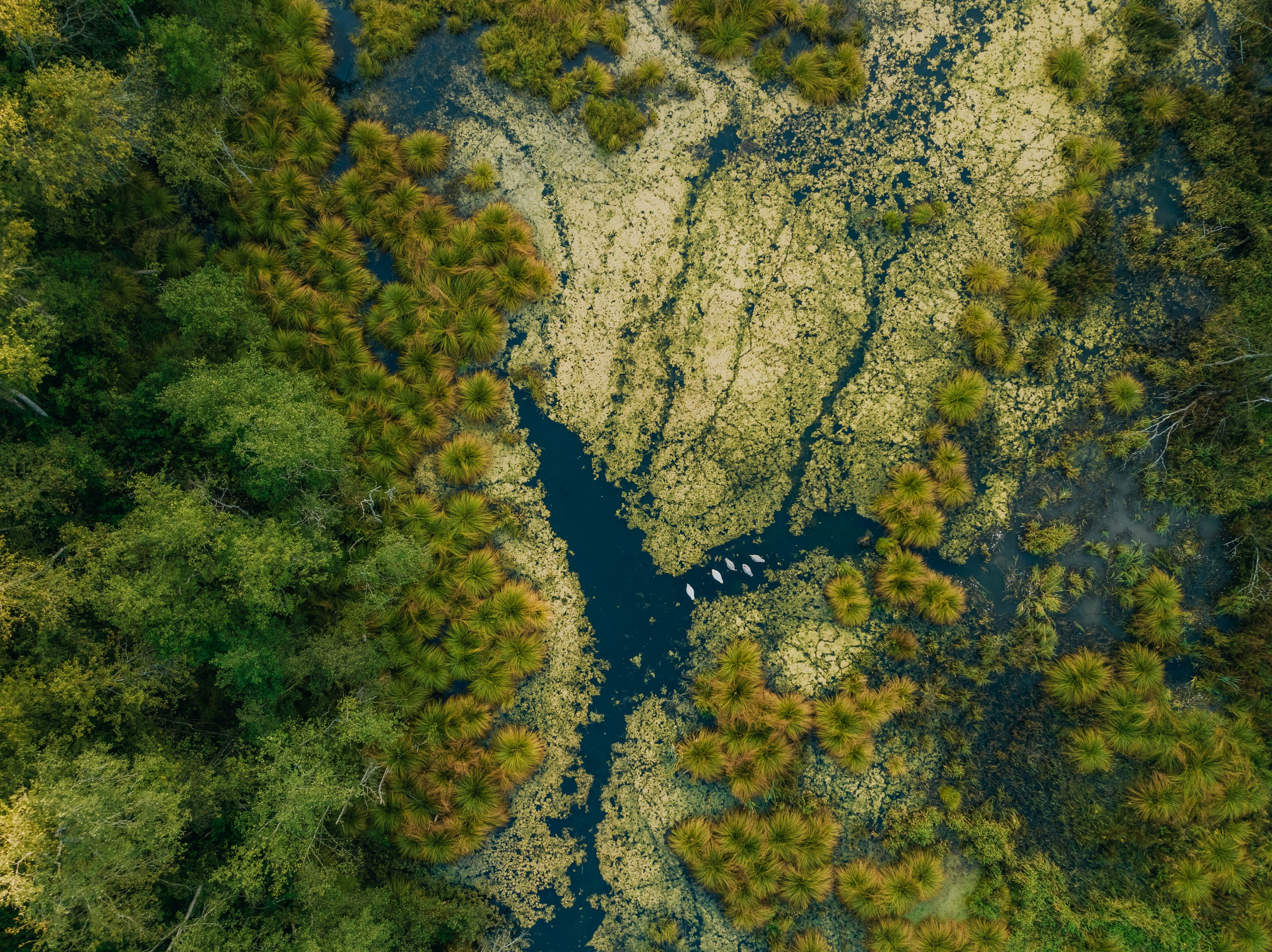
Nature’s water treatment plants
Wetlands are highly effective when it comes to cleaning up pollution. The low oxygen levels in the water create perfect conditions for microbes to eat harmful pollutants instead of easier-to-digest substances.
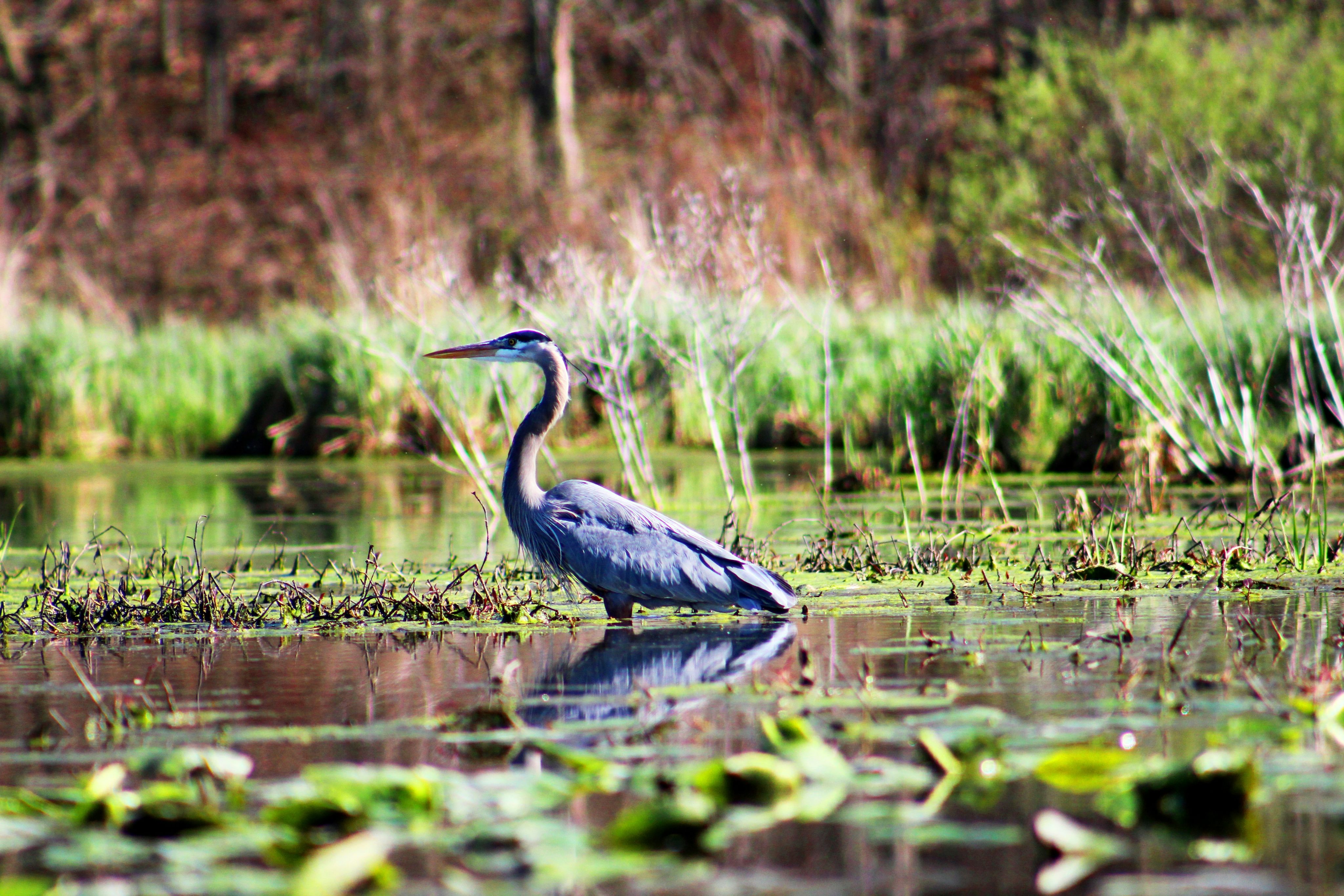
FORGING partnerships
Creating treatment wetlands at the scale and pace we need requires national and local government involvement, the investment and know-how of businesses, and a process of co-creation with landowners and local communities:
Government
- Department for Environment, Food and Rural Affairs (Defra)
- The Environment Agency
- Natural England
- Department for Levelling Up, Housing and Communities, and Homes England
- The Water Services Regulation Authority (Ofwat)
Business
- Landowning organisations or utility companies
- Farmers and food/drink production industries
- Developers and planning organisations
Civil Society
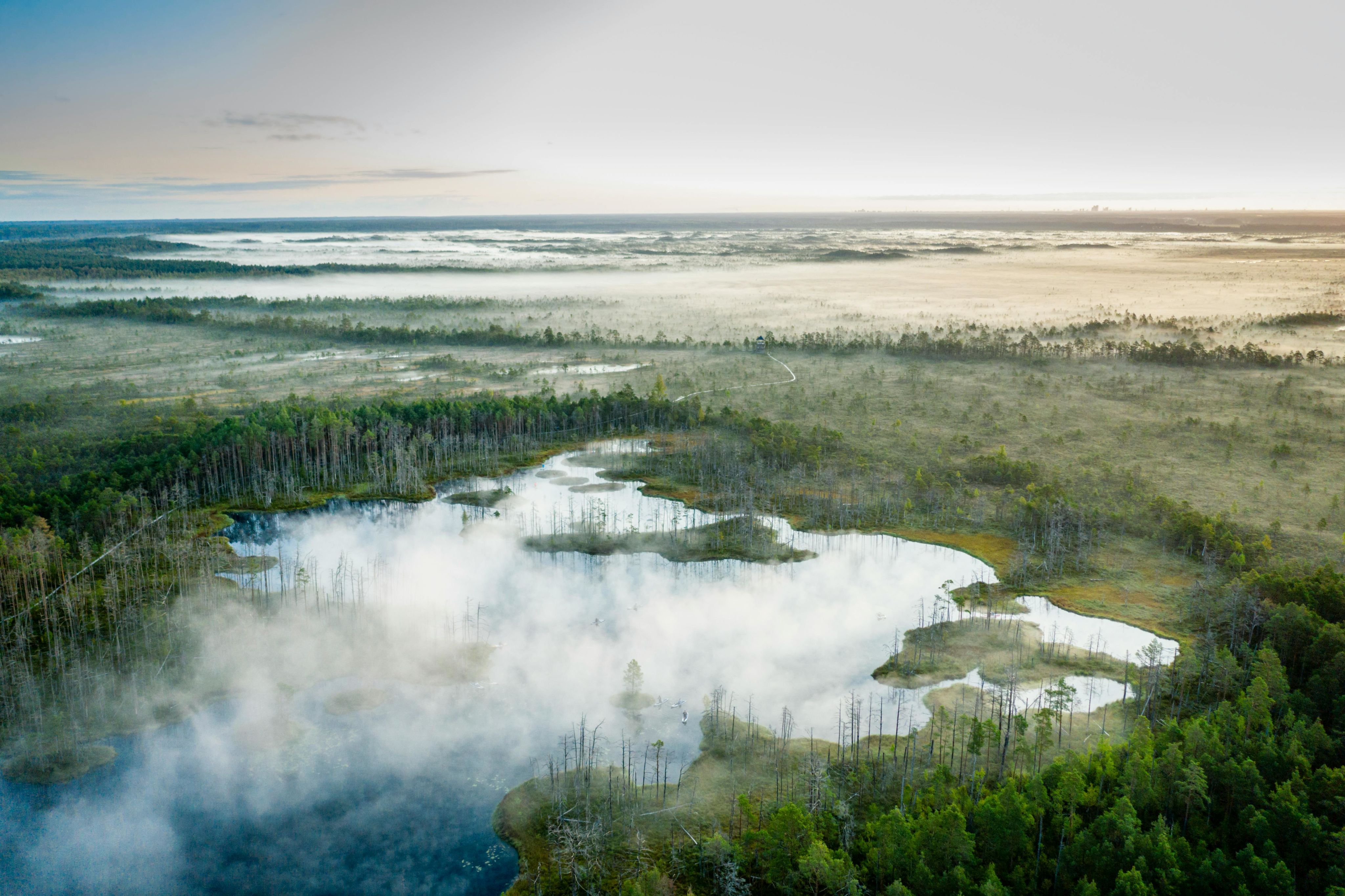
Mapping the potential of wetlands for water quality
Our wetland potential maps highlight the scale of opportunities to use wetlands to improve water quality in catchments where water quality pressures are particularly high.
By prioritising Drinking Water Protected Areas, locations with low water quality, and high housing development pressure, we’ve identified catchment areas where treatment wetlands can make the biggest difference. In these key areas, we mapped out wetland potential by considering topography, soil type and proximity to potential pollution sources, while avoiding key infrastructure.
© WWT copyright and/or database right 2024. All rights reserved. Contains, or is derived from, information supplied by governmental and non-governmental organisations listed at https://www.wwt.org.uk/data-sources.

The economic potential of water-purifying wetlands
The economic analysis by eftec focused on creating wetlands where they would have the most impact on water quality, especially where they can improve the status of rivers and other water bodies.
Creating 25,000 hectares of wetlands designed to improve water quality in England and Scotland, is estimated to provide at least £955 million of net value over 60 years.

